
What to do in Tierra del Fuego
The untamed wilderness of Tierra del Fuego is a haven for adventurers, whether you want to hike the southernmost trek in the world or sail past glaciers en route to Cape Horn.
Discover MoreDeep roots in Patagonia: We are ex-guides, tour leaders, outdoor enthusiasts, & adventurers.
We’ve got our feet on the ground: Impartial advice, a bespoke service, and at no extra cost.
For the ends of the Earth: Sustainability is more than our carbon footprint (but we’re reducing that too).
Deep roots in Patagonia: We are ex-guides, tour leaders, outdoor enthusiasts, & adventurers.
We’ve got our feet on the ground: Impartial advice, a bespoke service, and at no extra cost.
For the ends of the Earth: Sustainability is more than our carbon footprint (but we’re reducing that too).
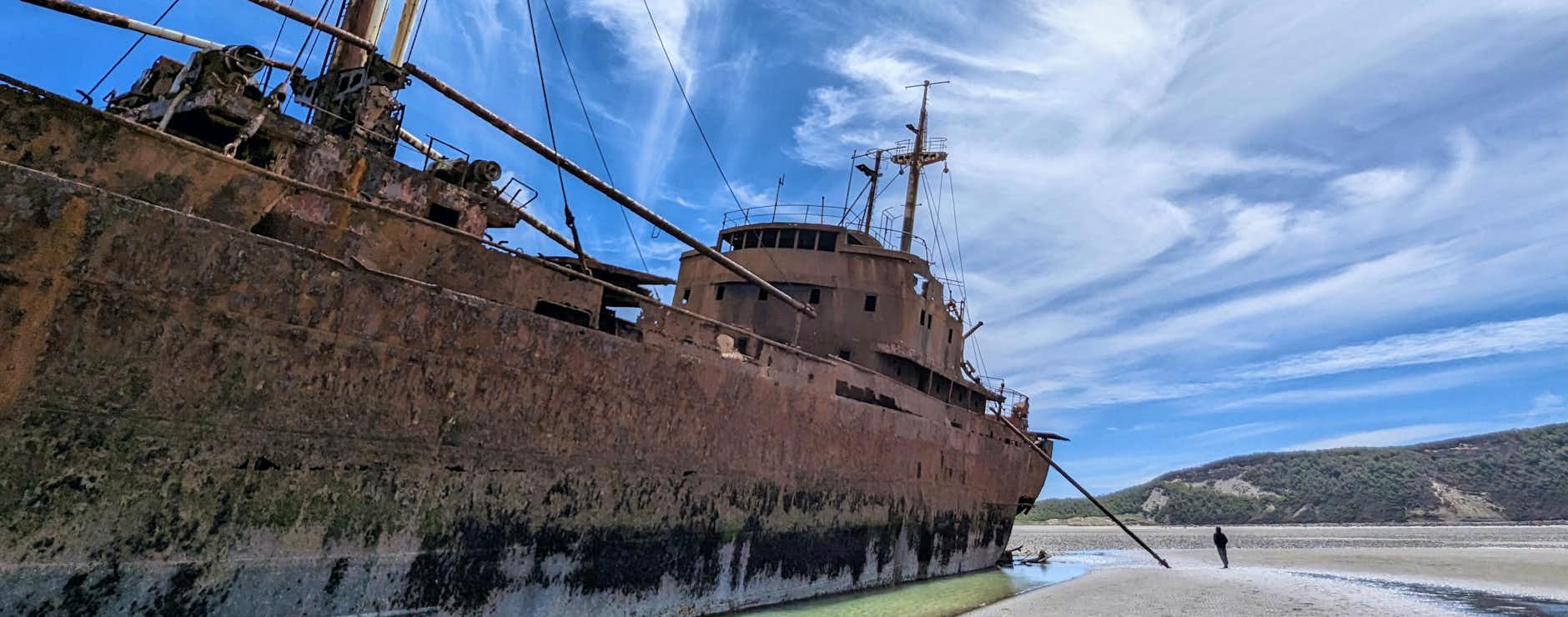
Tierra del Fuego is more than just a wilderness destination – it has a rich history and culture waiting to be discovered. Explore the living culture of its indigenous inhabitants, explore the frontier lives of the early colonists and shiver at the thought of serving time in what was once one of the world's most isolated penal colonies.
People have lived in Tierra del Fuego for 10,000 years, most notably the Yaghan, Selknam and Ona people, who were coastal hunter-gathers. The fires they kept burning constantly led the Portuguese explorer Ferdinand Magellan to dub the land Tierra del Fuego when he became the first European visitor in 1520.
Although western sealers called in here, it wasn’t until the 1830s that science began to map Tierra del Fuego, when it was surveyed by HMS Beagle, which carried a certain naturalist called Charles Darwin on board on the voyage that propelled his theory of evolution by natural selection.
Throughout the 1800s, missionaries and settlers colonised the island, with disastrous effects for the indigenous people. Later, a short-lived gold rush drew adventurers from all over the world, who congregated in the settlements that would become Ushuaia and Porvenir.
Early ranchers capitalised on this windy grass-covered region to raise sheep, but it wasn’t until 1902 when Ushuaia started to really grow, when it became a penal colony and dumping ground for Argentina’s most undesirables.
The city's prison has now been shut for over 70 years, and in the 21st century the region trades on tourism. But despite media rumours of their demise, the Yaghan people have outlasted every change, and a small number still live here today.
When Argentina and Chile settled their land border in Tierra del Fuego in 1884, Argentina designated its remotest province as a penal colony. Most prisoners sent here were from the army, with half of them serving time for murder.
Today's Ushuaia likes to lean into its convict roots, with street art and souvenirs. The prison has been converted into the excellent Museo Marítimo & Museo del Presidio, which tells the human story of Tierra del Fuego, with each cell converted into an exhibition space. In nearby Tierra del Fuego National Park, it's possible to ride the Fin del Mundo train, originally made by prisoners to take them to wilderness work camps.
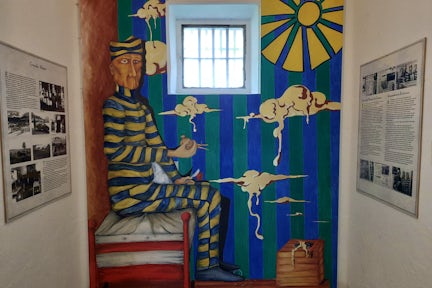
Museo Marítimo & Museo del Presidio in Ushuaia
The Yaghan (sometimes also known as the Yamana) were the largest group of indigenous Fuegian living in Tierra del Fuego when the first Europeans arrived here, and are the only ones to have survived the colonial period into the present day.
Yaghan culture is still alive in Puerto Williams on Navarino island. The island is home to a small Yaghan community, some of whom work as guides. Many of them retain Yaghan as their second language, if not their mother tongue. The island's excellent museum gives smart insights into their history and culture, while many of Navarino's bays still contain clearly visible traces from their ancient hunter-gather campsites.
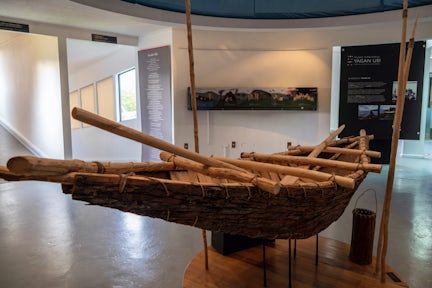
Yaghan boat in Puerto Williams
The first European colonists came to Tierra del Fuego in the middle of the century, and there are plenty of traces of them in the landscape to be seen.
The most famous of these is Estancia Harberton, a historic ranch-turned-museum. It was once home to Lucas Bridges, who created the first English Yaghan dictionary, and offers a fascinating insight into frontier life. Elsewhere, in places like Estancia Cabo San Pablo (which can be visited on an overnight stay), those ranching traditions carry on into the 21st century.
Adventure cruises to Cape Horn and the glaciers may also visit the stunning Wulaia Bay, site of the one first missions to Tierra del Fuego, on a spot where Charles Darwin once stood.
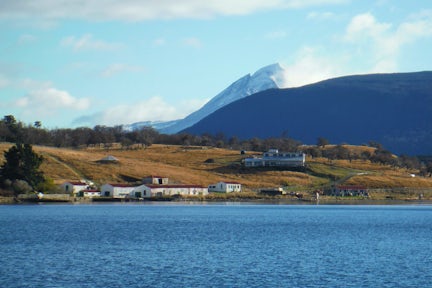
Estancia Harberton
Few places on the map are more inclined to make a sailor shudder than Cape Horn. For centuries after the first European laid eyes on it in 1616, it was feared for its turbulent seas. ‘Rounding the Horn’ to cross the tip of South America from the Atlantic to the Pacific Oceans was a traumatic (and often fatal) experience in the days of sail.
Today, Cape Horn can be easily and safely visited on a small ship adventure cruise around the glacier-fringe coastline of Tierra del Fuego. There is the opportunity here to see the Cape Horn monument, the lighthouse at the end of the world – and look out into an ocean that stretches all the way to Antarctica.
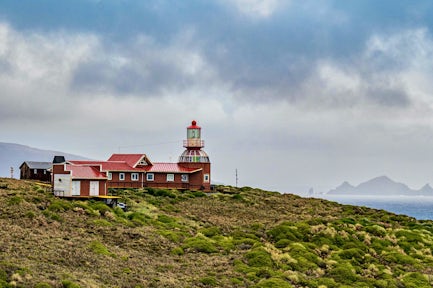
The lighthouse at Cape Horn
Ushuaia is one of Argentina’s best food destinations, and its location on the Beagle Channel is the reason why. The cold waters here are fantastically productive, and Ushuaia’s king crab is as celebrated as Alaska’s (and some might whisper it, even better). The wild salmon caught here is equally excellent, alongside local Black Hake and Chilean Sea Bass . Alongside the seafood, the Tierra del Fuego steppe is home to sheep ranching so there are plenty of opportunities for asado, Patagonia’s traditional barbecue.
While Ushuaia has some excellent restaurants, we love the hidden foodie experience at Alma Yaghan outside town which overlooks the Beagle Channel, where gastronomic alchemy is performed on the freshest ingredients harvested from the sea and the surrounding forest.

King crab in Ushuaia
Although the Spanish gave the region its name Tierra del Fuego, you’ll have learned your first Yaghan word before you even arrive. The name Ushuaia is the Yaghan word for ‘deep bay,’ and many places still retain their Yaghan names today.

The untamed wilderness of Tierra del Fuego is a haven for adventurers, whether you want to hike the southernmost trek in the world or sail past glaciers en route to Cape Horn.
Discover More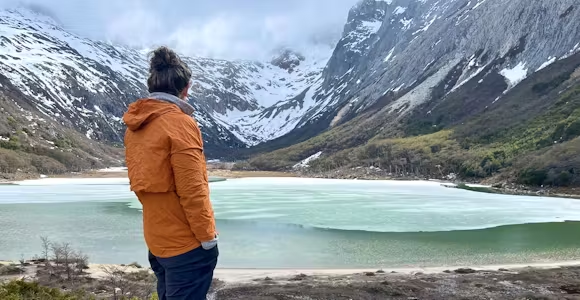
Tierra del Fuego is a land of mountains, lakes and glaciers that are perfect for day hikes, from a base in Ushuaia or Navarino Island.
Discover More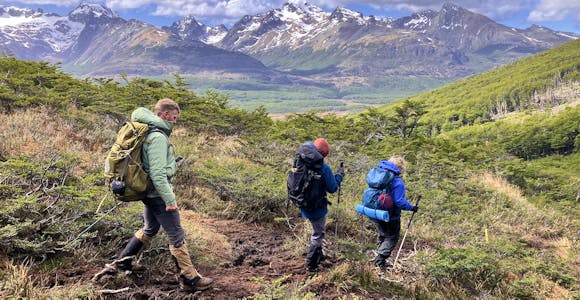
Tierra del Fuego is home to some of Patagonia’s most remote and rewarding multi-day hikes, trekking in the Cordillera Darwin and Dientes de Navarino mountain ranges.
Discover More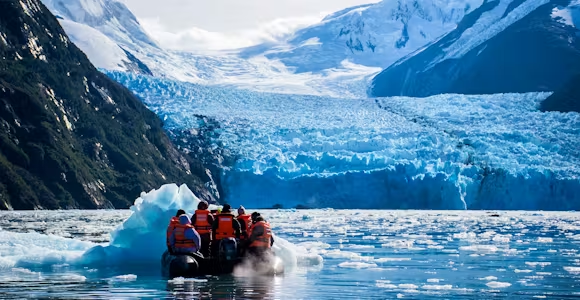
Adventure cruises around Tierra del Fuego can take you to remote and beautiful glaciers, penguin islands and Cape Horn on the tip of South America.
Discover MoreWe are guides, guardians, and travellers with over 400,000 hours of lived experience in Patagonia.
From a world of options, we’ll help you discover your perfect trip.
We care deeply about protecting Patagonia, that’s why 1% of our revenue goes to conservation.
Our dedicated support throughout will make sure you have the experience of a lifetime.
We'll spend some time listening to your aspirations, then discuss the kind of experience that might suit you.
Next we'll discuss the options, shortlist the best trips for you and present you our impartial recommendations.
We'll place a 24 hour hold on your preferred option - without obligation - whilst we talk through the details.
Whatever your budget, group size, length of stay, preferred activity or appetite for adventure, we can help.
1-888-970-4571This website uses cookies to ensure you get the best experience on our website. Privacy policy